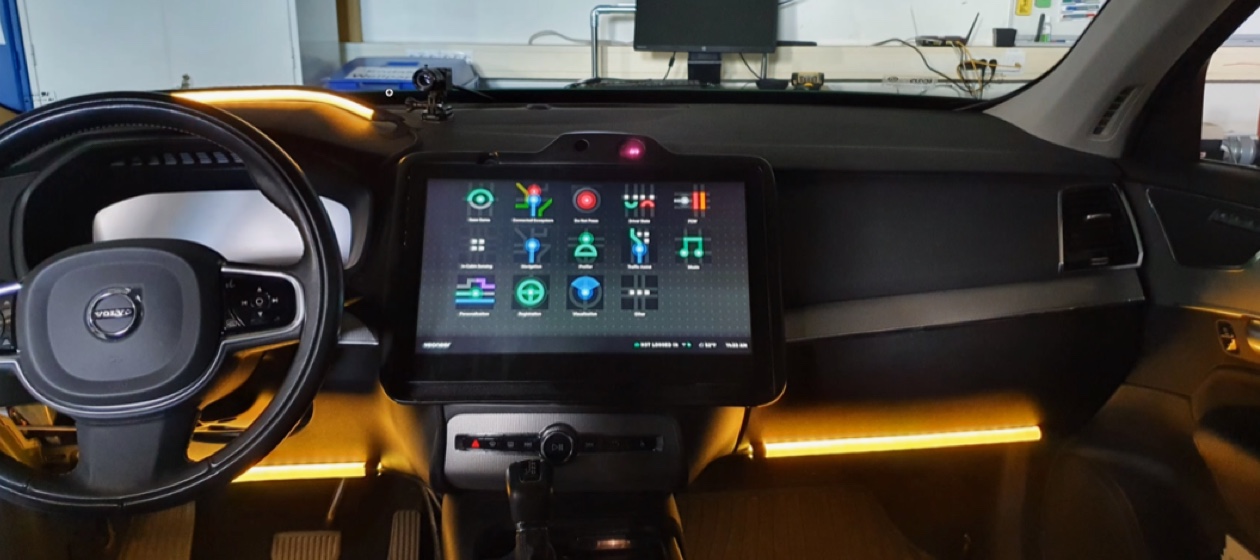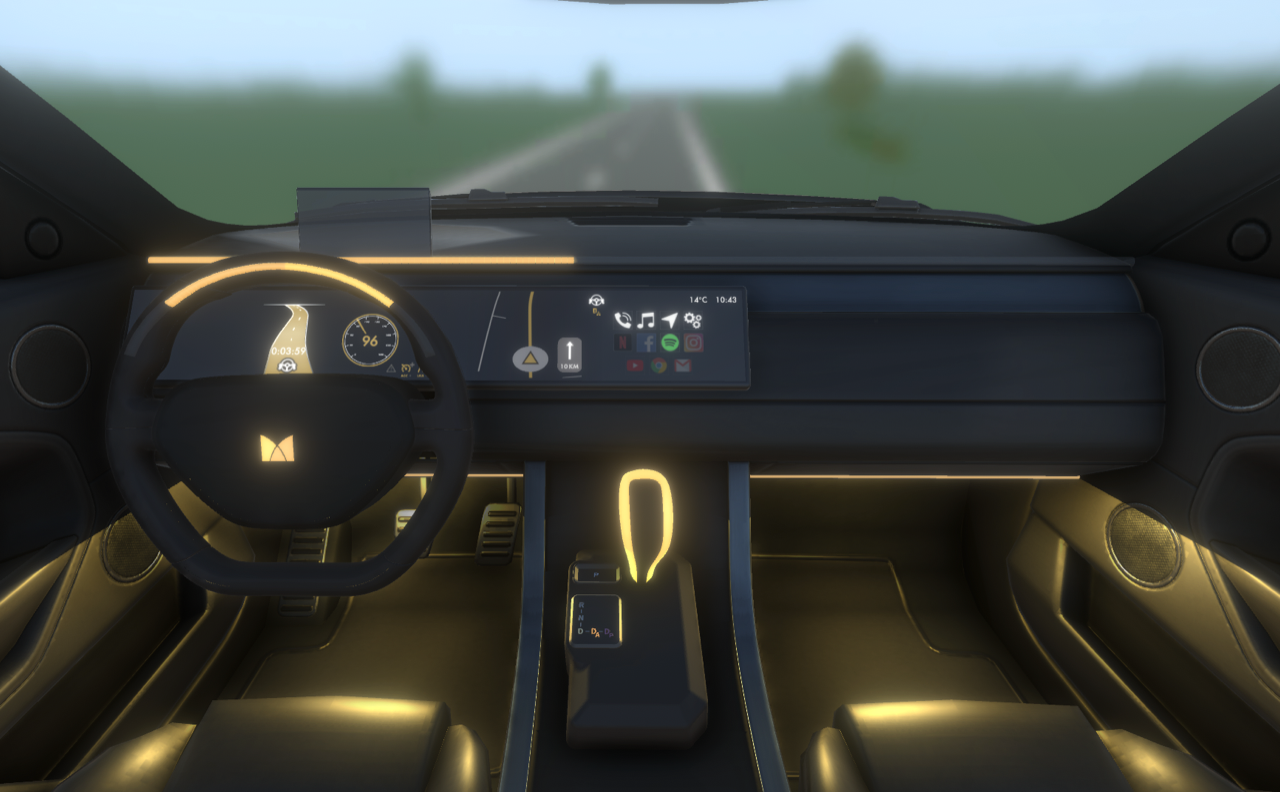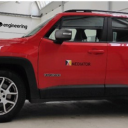MEDIATOR is developing a system that mediates between human drivers and vehicle automation to ensure safe, real-time switching between the two, based on who is fittest to drive and a driver’s preference. Currently, the prototypes of the four main Mediator system components and their integration are getting shape. Previously, we described the driver state component and the automation state component. Now we briefly introduce our steps towards reliable and understandable means for exchanging information between the human driver (operator) and the (partially) automated vehicle: the Human Machine Interface (HMI). The development of this module is led by Delft University of Technology with contributions from consortium partners.
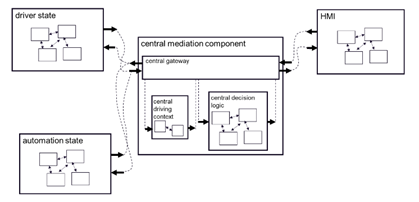
The functions of the Mediator HMI
The HMI of the Mediator system is meant to enable the human drivers to engage and interact with the system in an unambiguous and safe way. The HMI of the Mediator system must be able to facilitate multiple tasks, as elaborated in detail in Deliverable 1.5.
• Guiding conventional driving tasks, e.g., providing information about driving speed, speed limits, and routes.
• Guiding transfers between driver and various levels of autonomous driving (take-overs) e.g., informing the driver about the time until automation can take over or until automation will no longer be available.
• Negotiating between driver and automation regarding take-overs e.g., when the driver prefers to keep control while from a safety perspective handing-over would be desirable.
• Executing preventive measures to maintain driver fitness to drive e.g., in case a driver is in control but seems to be distracted or doze off and becomes less attentive.
• Executing corrective actions to increase driver fitness to drive e.g., when the driver must take-over from the automation in a while but is sleeping or involved in another task.
The Mediator HMI must inform and support the driver on all of the above in a way that is transparent, intuitive and unambiguous, well-timed, and not leading to information overload or being distractive in itself.
A holistic approach
At the start of the project design guidelines have been set, a holistic approach being the most important one, rather than merely adding more functionality to contemporary, already visually complex human machine interfaces. This means that the HMI, for conveying a message, different visual, auditory, and haptic cues may be evoked while others, such as the entertainment system, may be supressed. The effect is a focussed and unambiguous interaction with the driver.
Further design guidelines are the application of a single ritual, or procedure, for all tasks and designing from known affordances (recognisable cues) to facilitate quick learning, as well as designing for both user and industry acceptance.
Automation modes
The SAE has defined six levels of automation merely from an engineering standpoint,. In MEDIATOR we have reduced the number of automation modes to three taking a human centred perspective: manual, assisted, and piloted. To put simply, assisted driving requires the driver to be constantly actively involved in the driving task, while in piloted mode the driver is allowed to perform non-driving related tasks. From a technology point of view piloted driving requires real-time context information while for assisted driving the car’s own sensors suffice.
Visual cues
The main means of visual communication of the Mediator HMI is colour. Amber has one of the highest luminosities, attracting continuous attention of the driver. Hence this colour communicates assisted driving. On the other hand, purple has a much lower luminosity and generally communicates comfort. Hence this colour is used to indicate piloted driving, i.e., the driver can be out of the loop. No lighting indicates the absence of assisted driving functionalities. The figure below illustrates how these colours, in combination with icons and timers, communicate availability of driving modes and the time until take-over.
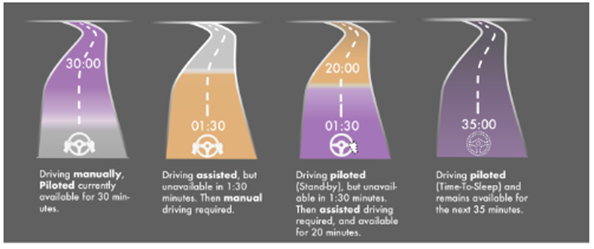
Additional ambient lighting, LED strips on the dashboard and the steering wheel also display the driving mode colours, so that the vehicle’s whole interior holistically communicates the current automation mode regardless of the driver’s attention focus. Additionally, the steering wheel LED strips guide automation mode transfers by a visual countdown:
- NO ambient light for manual driving mode
- Amber ambient light for assisted driving mode
Red ambient and LED lighting is reserved for emergency situations e.g., when the driver is not responding to a take-over request.

Auditive cues
The Mediator HMI also makes use of auditory communication. The main requirement here is that the meaning of individual sounds is clear, intuitive, and thus easy to learn and identify. The holistic approach facilitates this by reducing competitive HMI sounds, like the entertainment system. The sounds for the Mediator HMI are all in the range of 1000 - 5000 hertz. Human ears are most sensitive within this frequency range, and these sounds are less likely to be masked by interior or exterior noise like traffic sounds and voices. The HMI makes use of abstract sounds as much as possible . These abstract sounds reflect 1) three levels of urgency alerts, 2) a notification informing the driver that a driving mode is available which the driver can choose to accept or not, and 3) a confirmation sound that indicates that an action is completed. For some situations a spoken message can be useful instead of, or in addition to just an abstract sound. However, spoken messages are only applied when it cannot be avoided, because spoken messages take longer and may be interpreted ambiguously. In the current Mediator HMI a woman’s voice is applied because of its relatively high voice, which is perceived as intelligible. However, a variety of voices can be necessary, because of automotive branding, cultural differences and driver’s personal preferences.
Final testing
Elements of the HMI have been tested first in small-scale laboratory experiments., e.g., in Virtual Reality studies. Currently, combinations of HMI elements are being tested in a series of driving simulator studies. For a series of on-road trials in Sweden and Italy vehicles have also been equipped with respectively a subset of Mediator’s HMI, and a complete prototype of the Mediator HMI. The trials will cover different road conditions and traffic situations. The results of these tests will result in further improvements, specifications and recommendations for HMI design in autonomous driving.
